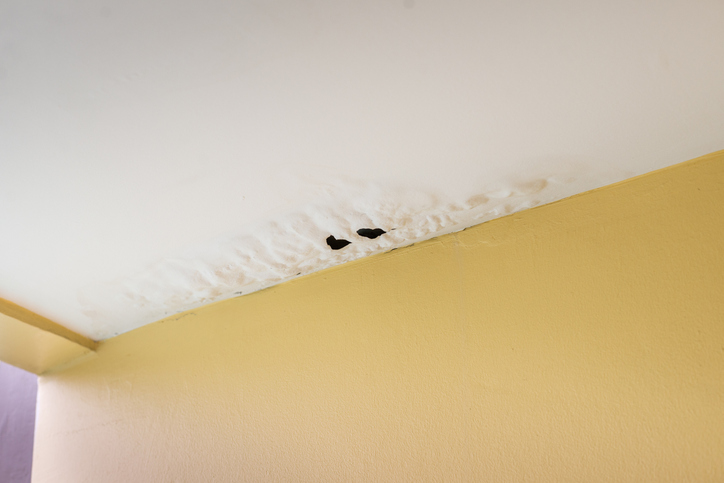Signs of Water Damage

- Chronic condensation
- Leaks in the roof, foundation, or attic
- Natural disasters such as hurricanes
- Damaged pipes
Identifying water damage early is key to preventing extensive damage and for preventing mold, but in some cases, you may not notice the water damage until it is too late. When looking for water damage check your ceiling for depression around the fasteners. As the water causes the ceiling to droop and sag, it will cause small dimples to form. These dimples will look like an upside-down crater.
How to Tell if the Drywall Needs to be Repaired or Replaced
One way to see if your drywall is salvageable, you can poke the drywall with your fingers to determine its structural integrity. If the drywall still feels solid and firm, there is a chance that it could be okay, but if it is soft or spongy, you will need to cut out the damaged area and replace it carefully.
Repairing Drywall
Should your walls or ceiling be impacted enough that replacement might be required, it is most important to take out all of the damaged or affected wallboard. Wallboard or drywall (sometimes referred to as sheetrock) comes in sheets of 4 foot wide and 8-12 feet long. Your walls and ceilings will normally have support framing (wall studs or ceiling joists) that are 16 inches apart. When cutting or removing the wallboard, cut to the centers of the joist or stud that is just beyond the wet or affected area. In most cases, it is better to use full 4-foot sheets to take advantage of the beveled edges which makes a smoother finish.
Unless you have experienced with replacing or repairing drywall, it is better to leave drywall finishing to professionals. It is not difficult, so if you wish to attempt your own repairs, go to YouTube for a look at the many how-to instructions videos.
Professional Water Damage Restoration in Pittsburgh
At ServiceMaster Pittsburgh, our emergency water damage restoration services are designed to help minimize the damage to your home. We are available to respond to your restoration needs 24 hours day, seven days a week to assess the damage and develop a comprehensive drying plan for your home. We will quickly extract the water, remove any unsalvageable building materials, and will also install high-performance dehumidification equipment. We also offer professional construction services, which include drywall replacement and repair.
